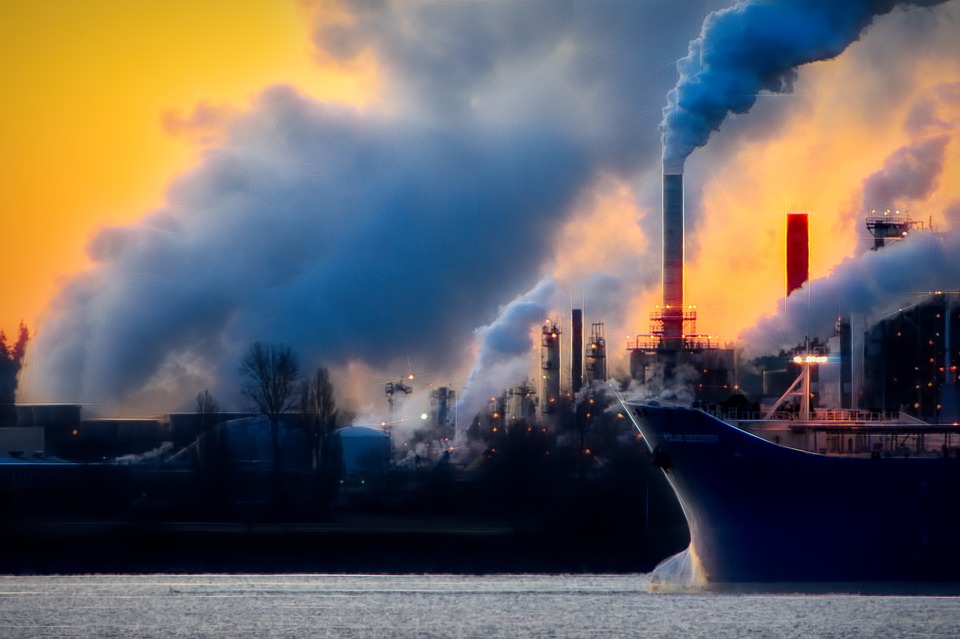Dr David Brown, Research Assistant, University of Warwick
The disproportionate impacts of toxic pollution have been well documented in environmental justice research, with marginalised, low-income and minority communities tending to bear the greatest burdens of industrial pollution. Environmental justice researchers have contributed significant insights into the myriad forms of injustice associated with the uneven benefits and burdens of fossil fuel extractivism and industrial pollution. These injustices have been explored across the world on varying scales of enquiry, from those examining North-South dynamics in relation to climate change to those interrogating the distribution of environmental and health impacts from specific industrial sites, and how these are experienced by proximal communities living.
While environmental justice struggles and the disproportionate burdens of toxic pollution are closely bound up with the specific contexts in which they emerge, all of these are tightly connected to the domination of an expansive and extractive fossil fuel industry, perpetuated and supported by powerful interests,. Political economists (e.g. Newell and Mulvaney, 2013; Paterson and P-Laberge, 2017; O’Hara, 2009) have written extensively on the economic and political origins of polluting industries and the historical dependence of an economic system continued fossil fuel extractivism, production and mass consumption (i.e. ‘carboniferous capitalism’). This dependence on fossil fuels goes beyond material interests to embody and signify cultural meaning and of privileged subjectivities, as scholars have recently drawn out (Huber, 2013; LeMenager, 2016; Daggett, 2018).
Environmental injustices and the uneven experiences of fossil fuel extraction and production cannot be divorced from the evolving political and economic landscapes, both on micro and macro scales of analyses. The investments made by fossil fuel and petrochemical multinationals are continuing to increase in scale and ambition, with plastics production projected to increase by 40% in the next decade . Indeed, many of these firms seek to address the economic challenges of changing markets for fuels and the emergence of electric vehicles as an opportunity to increasingly integrate refineries with petrochemical production plants and to expand its plastics manufacturing bases.
As a Guardian report recently revealed , many of the same companies supporting an ‘alliance to end plastic waste’ are among those behind the largest investments in new plastic production plants (e.g. ExxonMobil, Shell). The projected ‘global boom’ in plastic manufacturing is closely connected to the expansion of fracking operations in the United States. As scholars have argued (Paterson and P-Laberge, 2017; Newell and Mulvaney, 2013; Newell & Paterson, 1998), a contradiction of ‘carboniferous capitalism is that powerful business interests are dependent on maintaining the status quo and of expanding fossil fuel and petrochemical operations.
In other words, the global petrochemical industry is driven by unsustainable modes of operating and of unsustainable systems of production and consumption. This is despite growing and ever more urgent environmental crises that are enveloping the planet. A recent UN report suggests that we have around 12 years remaining to ensure global temperatures do not exceed 1.5°c (IPCC, 2015), while the plastic waste crisis is understood to be pervasive and indomitable, closely connected as it is with the fossil fuel industry and unsustainable production and consumption practices. Scientists recently warned that plastic waste risks “near permanent pollution of the Earth” . Within these uneven configurations of power and capitalism, the petrochemical industry brings about subjective, differential and everyday experiences of toxicity.
From interdisciplinary perspectives, the articles in this issue of Toxic News seek to make visible issues of environmental justice in industrial sites and to bring to light the differential, everyday lived experiences of toxic pollution across cases in the United States, Canada and Italy. Each of these articles highlights the emergence and perpetuation of environmental injustices within myriad, divergent contexts. These highlight the continued need to ‘connect the dots’ across geographic spaces and across different links in the petrochemical supply chain (from oil exploration and fracking to plastics production to managing plastic waste), and to reveal the commonalities across and between environmental justice struggles.
Firstly, Diane Sicotte unpacks the emerging toxic connections between the expansion of fracking in the United States and plastics production. She draws out the mutually reinforcing relationship between the low-cost of natural gas and the profitability and expansion of plastics manufacturing. In doing so, the article interrogates the toxic injustices that emerge across the petrochemical production chain.
Secondly, Troy D. Abel, Jonah White and Stacy Clauson make visible Seattle’s ‘segregated riskscape’, detailing the disproportionate burdens of toxic pollution borne by communities in low-income and socially vulnerable neighbourhoods in South Seattle, compared to the more affluent Northside residents. These patterns in Seattle tend to reflect the concentrated advantages and disadvantages which have become prominent in many US cities.
Thirdly, Sarah Marie Wiebe, Jen Bagelman and Laurence Butet-Roch draw attention to the toxic pollution in Canada’s Chemical Valley in Sarnia experienced by indigenous peoples at the Aamjiwnaang First Nation reserve. Through a photo essay, the authors argue for a more multi-dimensional, prismatic account of the Aamjiwnaang’s everyday exposure to toxins and practices of resistance. In doing so, they seek to uncover the lived realities and environmental injustices embedded in places exposed to toxic pollution such as Chemical Valley.
Fourthly, Sophia Jaworski critically reflects on the chemical sensitivities connected to the complex contexts of petrochemicals in Toronto, Canada. She draws out the embodied, everyday and uneven experiences of toxicity and toxic exposure, specifically in relation to the impact of these upon health and well-being. She argues for moving beyond examinations of the environmental injustices associated with communities in proximity of industry towards interrogating the toxicity of everyday landscapes.
Finally, Angelo Raffaele Ippolito explores the moral struggles of a community in Taranto, Southern Italy, faced with industrial pollution from the largest steel mill in Europe. Drawing from ethnographic fieldwork, he interrogates the lack of community mobilisation in the community since the 1960s and the social, moral and historical structures that enabled such minimal environmentalism in Taranto.
